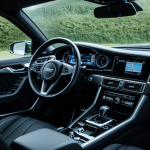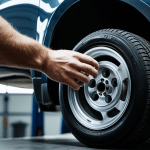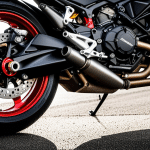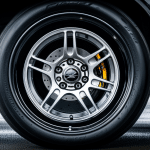Importance of Upgrading Digital Dashboards
In the evolving landscape of vehicle technology enhancement, digital dashboards play a pivotal role, particularly concerning digital dashboard safety. These dashboards serve as the vehicle’s nerve center, offering critical information and controls directly within the driver’s line of sight. By upgrading to modern digital dashboard systems, drivers can enjoy several benefits, pushing the boundaries of traditional vehicular control panels.
One primary advantage of dashboard upgrades is improved driver awareness. Cutting-edge digital dashboards offer real-time data displays, providing information on navigation, speed, and engine status. This heightened awareness can drastically enhance decision-making processes while driving. Sophisticated alert systems also contribute significantly to accident prevention by notifying drivers of potential hazards.
A lire également : Traveling with Pets: Key Safety Tips to Keep Your Eyes on the Road
Moreover, contemporary digital dashboards are designed with integrated safety features that align with technological advancements. Features such as lane-keeping assist and collision warnings have transformed driving safety into a proactive endeavor, reducing the chances of human error.
Additionally, dashboard upgrades facilitate a customizable driving experience. Advanced dashboards often allow drivers to choose display preferences, ensuring that the most pertinent information is always accessible. This customization further augments dashboard upgrades, leading to safer and more intuitive driving experiences. Investing in dashboard upgrades ensures staying at the forefront of automotive safety technology.
Avez-vous vu cela : Navigating the Risks: The Dangers of Using Non-OEM Parts for Vehicle Repairs
Recommended Features for Enhanced Safety
Upgrading to digital dashboards offers an array of safety features that enhance vehicle safety technology. When considering these upgrades, it’s essential to focus on key elements that contribute significantly to safer driving experiences.
Navigation systems, real-time speed monitoring, and advanced warning indicators are critical components in modern digital dashboards. These features keep drivers informed about their surroundings, provide alerts on speed limits, and signal potential road hazards, thereby preventing accidents.
Moreover, the value of a customizable display cannot be overstated. With such capabilities, drivers can personalize their dashboards to show information that suits their needs best, whether it be navigation details, engine performance, or safety alerts. This flexibility ensures that the driver maintains focus and control, adapting to various driving conditions.
Lastly, integration of high-tech safety features like lane-keeping alerts and collision warnings can drastically elevate driving safety. These enhancements proactively respond to situations before the driver may even be aware, thus safeguarding against common errors. When evaluating dashboard upgrades, ensuring these cutting-edge digital dashboard enhancements can significantly impact overall vehicle safety.
Installation Guidelines
Upgrading your vehicle’s dashboard to a modern digital version can significantly enhance its technology. Understanding dashboard installation is crucial for a successful upgrade. Here’s a step-by-step process to help navigate the installation.
First, evaluate your vehicle’s compatibility with new dashboard versions. This ensures the integration is seamless. Then, gather the necessary tools: screwdrivers, wire strippers, and connectors. Begin by disconnecting the vehicle’s battery to minimize the risk of electrical shock. This precaution safeguards against potential hazards and protects both the vehicle and installer.
Next, remove the existing dashboard with care. Note the placement and connection points of wires and components, as it aids in the reinstallation process. Once removed, align the new digital dashboard following manufacturer instructions. Pay attention to technical specifications to ensure proper fitting and functionality.
Reconnect wiring, ensuring all connections correspond to the new system’s layout. Finally, power the vehicle and test the dashboard functions to confirm successful installation before securing it in place. In complex systems, professional installation can be invaluable, avoiding common pitfalls and ensuring equipment operates efficiently from the start.
Compatibility Considerations
When pursuing a digital dashboard upgrade, ensuring vehicle compatibility is crucial. Before making a decision, evaluate whether new dashboard versions align with your current vehicle systems. This assessment prevents functionality issues and ensures a smooth transition.
Key considerations include verifying dashboard versions that integrate seamlessly with existing setups. Look for compatibility with your car’s model year and specific features. Manufacturer specifications provide insights into limitations and capabilities, helping identify suitable options tailored to your vehicle.
Technology integration plays a pivotal role in determining compatibility. Engaging with a professional can offer valuable guidance on how new digital dashboards align with proprietary vehicle technologies. This expert insight aids in pinpointing possible discrepancies or advances that might influence the upgrade process.
Understanding the intricacies of your car’s configuration lays the groundwork for a successful dashboard transition. Ensuring updated driver-assistance systems are supported by your new dashboard is part of this process. As technology evolves, maintaining synergy between old and new systems is fundamental. By addressing these factors early, vehicle owners can harness the full potential of dashboard technology enhancements without disruptions.
Safety Precautions During Upgrades
When considering an upgrade safety for your vehicle’s dashboard, adhering to essential installation precautions is vital to ensure both the vehicle’s integrity and personal safety. Primarily, always disconnect the vehicle’s battery before initiating any work on the dashboard. This crucial step minimizes the risk of electrical shock and prevents potential damage to vehicle electronics during the installation process.
Securing your vehicle during the upgrade cannot be overstated. Properly anchoring the vehicle in a stable position prevents accidental movements that may result in injury or installation errors. Additionally, ensure the use of the correct tools for the task. Inappropriate tools can cause damage or make the process unnecessarily challenging, impacting the upgrade’s success.
Moreover, be attentive to the surroundings. Working in a well-lit area will provide better visibility, making it easier to follow the technical specifications accurately. Also, maintain an organized workspace, free from clutter, which helps avoid disturbances that could lead to mistakes or forgotten parts.
Lastly, consult a professional if you feel uncertain about any aspect of the upgrade. Expertise can prevent common errors, ensuring a smooth transition to the new digital dashboard system while keeping safety a top priority.
Potential Legal Regulations
When upgrading your vehicle with a new digital dashboard, remaining compliant with vehicle regulations is crucial. Firstly, understanding federal laws surrounding dashboard modifications is essential. These laws often encompass safety standards and the visual visibility of dashboard displays. Brands integrating certain safety features are usually in compliance, but verifying this is vital.
State and local laws may have additional requirements or restrictions on modifications. Hence, before proceeding with any upgrade, research the specific regulations in your area to ensure legal compliance. This could include aspects like emissions standards or display brightness limits, which can vary significantly between regions.
Resources such as the Department of Transportation’s guidelines provide insights into compliance with safety standards. Consulting with a professional familiar with these regulations can illuminate any legal pitfalls and ensure a seamless transition to your upgraded dashboard technology. They can guide on meeting legal requirements without compromising the vehicle technology enhancement benefits of modern dashboards.
In conclusion, understanding and abiding by both state and federal regulations will mitigate legal challenges and ensure your upgraded dashboard aligns with required safety and functionality standards. This adherence is essential to fully benefit from your investment in improved vehicle technology.
Visual Examples of Upgraded Dashboards
Exploring various digital dashboard examples provides insight into how upgrades can transform driving experiences. These upgraded vehicles showcase advanced functionalities and design enhancements that prioritize driver convenience and safety.
Many modern dashboards feature sleek, intuitive interfaces that facilitate ease of use. For instance, some upgraded dashboards integrate vibrant touchscreen displays, allowing for seamless interaction with navigation and media systems. The ergonomically designed controls ensure quick access to essential functions, emphasizing safety technology that keeps the driver’s focus on the road.
Different dashboard models demonstrate innovative features through visual clarity and customization. For example, heads-up displays project critical driving information onto the windshield, reducing the need to glance away from the route ahead. Other designs include adaptive lighting, which adjusts to ambient conditions for optimal visibility.
By examining these dashboard technology advancements, it’s clear how manufacturers prioritize a balance between aesthetics and functionality. These examples, with their upgraded designs, highlight the future of driver-assistance systems, making driving safer and more enjoyable. With ongoing technological advancements, future dashboards are poised to integrate even more innovative features, setting new standards for vehicle interiors.
Comparing Technologies and Products
Exploring the evolving landscape of dashboard technology comparison enhances your understanding of the myriad options available. Digital dashboards from different brands and models exhibit varied strengths and weaknesses, allowing for informed decision-making when considering vehicle upgrades.
When evaluating digital dashboard technologies, consider pros and cons such as interface intuitiveness, speed of data processing, and integration ease. Some models offer superior safety technology like adaptive cruise control or lane departure warnings, contributing to overall driver safety and digital dashboard safety.
A product reviews analysis highlights the balance between cost and functionality. Higher-end models often come with extensive dashboard upgrades features, offering better user satisfaction but at a steeper price. Budget options, while more affordable, might lack some advanced safety technology features. Buyers should weigh the necessity of such attributes against their cost implications.
Engage in dashboard technology comparison with a focus on aligning technological benefits with your unique driving needs. Comparing user experiences and expert reviews ensures you make a financially sound choice, securing an enhanced driving experience. With vehicle technology enhancement, informed decisions ensure that the investment aligns with both safety preferences and budgetary constraints.






